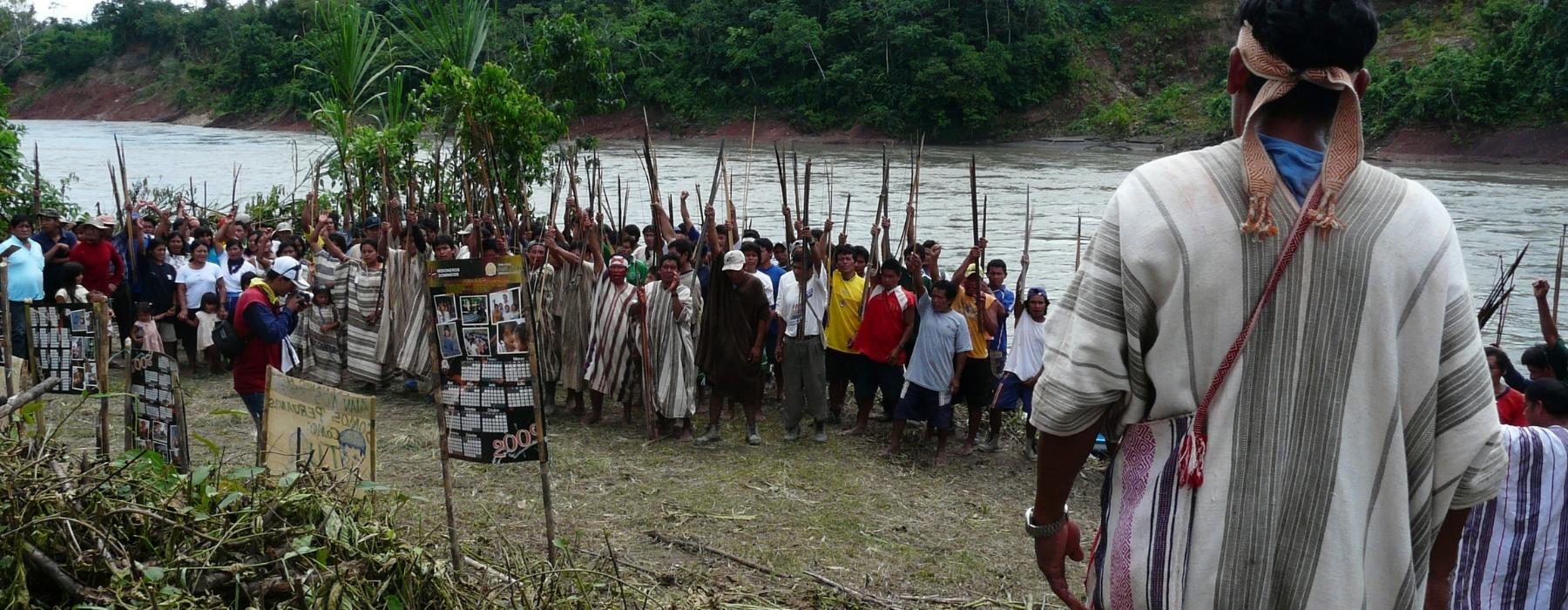
Amazon tribes in manu national park, are divided into three large groups: established native communities, indigenous people in initial contact, and indigenous people in isolation. Each group has different characteristics, which is why a differentiated treatment is required for each of them.
Understanding the differences between these groups, in addition to the internal differentiation within each group, is a necessary first step to understand the reality in which these indigenous peoples live. Each of these groups has different characteristics and has its own peculiarities, so that in order to better understand the reality in which they live, it is necessary to familiarize ourselves with their particular situation and assume a different perspective in each of the cases.
The Manu National Park and its adjacent area, in the Manu Biosphere Reserve, are characterized by their great cultural diversity. The high Andean part is inhabited by Quechua peasant communities; the Amazonian part by the Matsigenka, Yine Harakmbut, Yora (Nahua), Nanty (Kugapakori) and the “Mashco Piro” indigenous peoples, who, like some Matsigenka settlements and others, still remain in voluntary isolation or in initial contact with the larger society.
In the Andean zone, the Manu National Park adjoins the Quechua Peasant Communities of Mendozayoc, Pucará, Solan, Televan, Sahuay, Jesús María, Lali, Patanmarca, Lucuybamba, Huaccanca, Pilco Grande, Pasto Grande and Jajahuana. The Manu National Park is related to the Andean communities through agreements on the use of pastures, reduction of the conflict with the Andean bear and the prevention of forest fires.

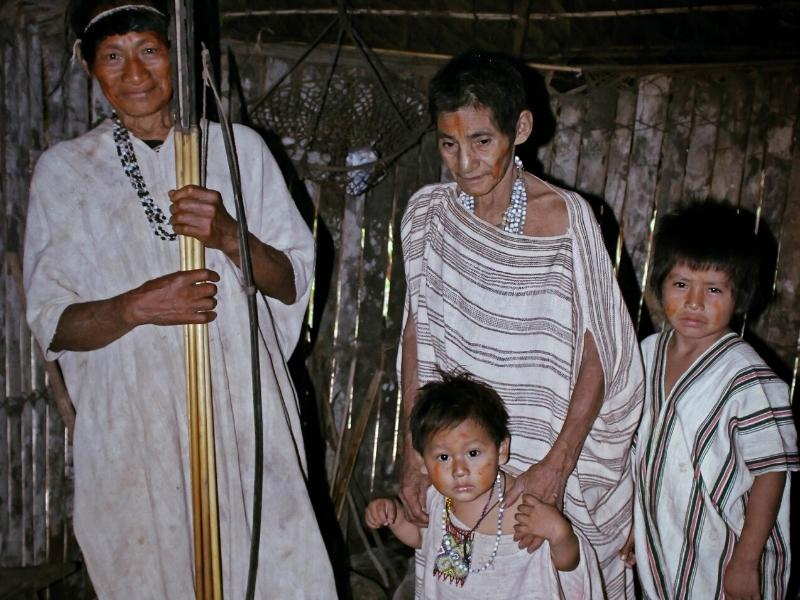
The Matsigenka are an indigenous or native people belonging to the Arawak linguistic family. Part of its cultural identity is the close relationship with the territory, which is considered a source of life since it provides various means for subsistence, as well as all the beings that inhabit it are important.
The territory of the Matsigenka people is located in the southeast of the Amazon basin of Peru, in the departments of Cusco and Madre de Dios. Its localities extend from the right bank of the Apurímac River, covering the basins of the Upper and Lower Urubamba until reaching the Manu and the Alto Madre de Dios River. In addition to living in localities, there are also Matsigenka families in a situation of voluntary isolation and initial contact, in the Kugapakori, Nahua, and Nanti Territorial Reserves, as well as in the Camisea, Cashiriari, Paquiría, and Timpía river basins. On the other hand, families living within the Manu National Park can also be located. Here, unlike other places in its territory, only economic activities for subsistence purposes and using traditional techniques are allowed.
Their main activities are centered on hunting, fishing and subsistence agriculture, the main products of their daily diet are sweet potatoes, cassava, corn, beans and tropical fruits. They also produce some products of commercial value such as achiote, turmeric, cocoa and coca leaves.
These populations have a clan chief who is more linked to the work of a healer, normally men can have up to two wives, once they reach adolescence women can still stay with their family for a few years, and men are already prepared to be able to marry and thus form a new home.
Among its main cultural manifestations are the songs and dances with an onomatopoeic connotation of the spirits of the jungles, sometimes they use some narcotic plants that the state in trance produces, or they simply drink the fermented drink of yucca, which they call Masato.
Currently some families of the Matsigenka ethnic group are dedicated to community tourism, where they teach their customs and traditions to tourists who visit the Manu National Park.
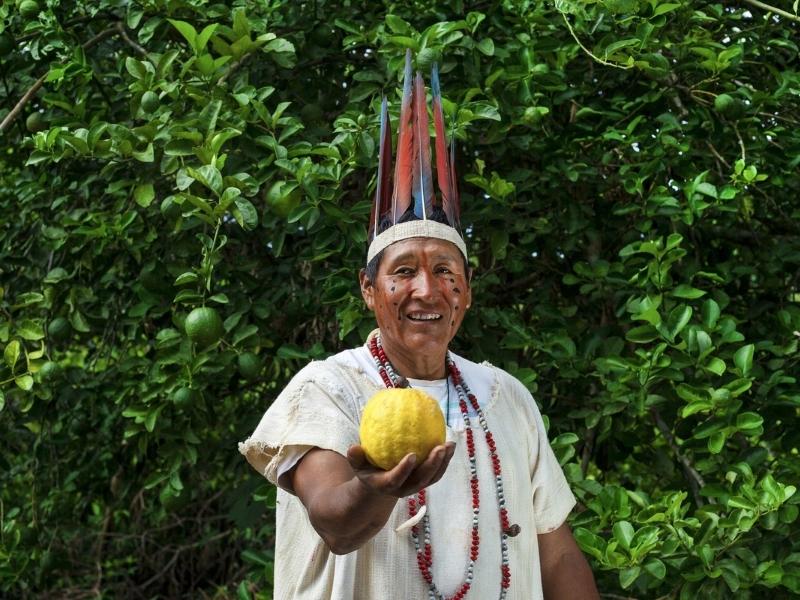
According to some authors, in the 1980s the name of Harakbut spread among some communities that refused to be recognized under names imposed from outside, such as mashco. The Harakbut self-denomination translates as ‘people’ or ‘humanity’, in the language of this people.
The Harakbut are an indigenous people who live mainly in the departments of Madre de Dios and Cusco, between the Madre de Dios and Inambari rivers. Their indigenous language belongs to the Harakbut linguistic family. This indigenous people is made up of several subgroups or partialities, of which up to eighteen have been identified. Among them, the best known are the Wachipaeri.
Traditionally, the Harakbut have lived in malocas or family houses. The changes that have occurred in recent decades in Harakbut society have led to the fact that they currently live in individual houses, calling them hak or jak, and the traditional jaktone or ‘big house’ malocas. Despite changes in the pattern of residence, close relatives often live close to each other in their communities, maintaining the parental structure.
The main economic activities among the Harakbut have been agriculture, hunting and fishing. For the Harakbut, hunting is the quintessential male activity. The ability to provide meat for his family is what traditionally gave Harakbut men prestige. Although men are the ones who use the bow and arrow as hunting tools, women can also participate in this activity by catching some animals such as turtles or armadillos. Hunting is an activity that can be done in a group, when it is done in more remote areas and the expedition is for several days.
Fishing is a collective activity that can bring together all those who live in the family home. It is the women who are dedicated to crushing the barbasco for this activity, catching the fish stunned by the barbasco with their hands, while the men use a bow and arrow.
As in the case of other Amazonian indigenous peoples, agriculture is a traditionally female activity: planting and harvesting are carried out by women, while men are responsible for clearing or clearing the land for the farm. The horticulture that is practiced is based on polycultures, in the case of an association of several intercropped crops with forest species. This is not limited to the farm, since an important part of the agricultural activity is practiced in scattered places.

The Yine people occupied the upper part of the Ucayali River basin and the lower part of the Urubamba River since pre-Hispanic times. Due to their skill as navigators, the Yine are also known as the ‘Amazonian Phoenicians‘. Based on various studies, it is known that since pre-Inca times, the Yine traveled long distances to exchange feathers, ceramics, skins and live animals for stone axes and precious metals with diverse populations.
The Yine people are also known as ‘piro’, a name that has been used by neighboring peoples and other foreigners to distinguish this people. The word “Yine“, on the other hand, would come from yineru, which in the indigenous language translates as ‘true men’, ‘human being‘ or ‘people par excellence‘.
The Yine people have been described by various authors as a people of excellent navigators. As good merchants, the Yine had to move in different directions since pre-Hispanic times, establishing contact with numerous peoples, Amazonian and Andean. The native communities of the Yine people are located mainly in the departments of Cusco, Loreto, Madre de Dios and Ucayali.
The Yine people have been known for their skill at navigation; Hence, fish has been, throughout its history, an essential element of their diet. This characteristic of the town is related to the fact that the Yine dwellings have traditionally been built on the banks of the largest rivers.
In accordance with the role of the Yine woman in the organization of this people, the division of labor would be less differentiated among the Yine; for example, many Yine women hunt and fish to a similar extent as men.
Slash-and-burn horticulture is a central activity in the life of the Yine people. Among the main products they harvest are cassava, bananas, corn, beans, sweet potatoes, squash, cotton and rice. As for the collection, this would be directed mainly to obtaining fruits such as aguaje, ungurahui and pijuayo.
For the Yine, fishing and hunting have been subsistence activities that, in addition to having an economic meaning, have a religious meaning and are associated with certain rituals. For example, the yine hunter has as an ancestral practice the consumption of special concoctions and the decoration of his face and parts of the body with signs in natural dyes; all this with the purpose of ‘combining’ with the animals that are his prey.
An ancestral custom of the Yine is to paint part of their body with the natural dye from the genipa or huito tree, for ceremonies and rituals, this practice could be related to the fact that the huito constitutes a very important element in Yine mythology, having a leading role in one of the myths that explains the origin of the people.
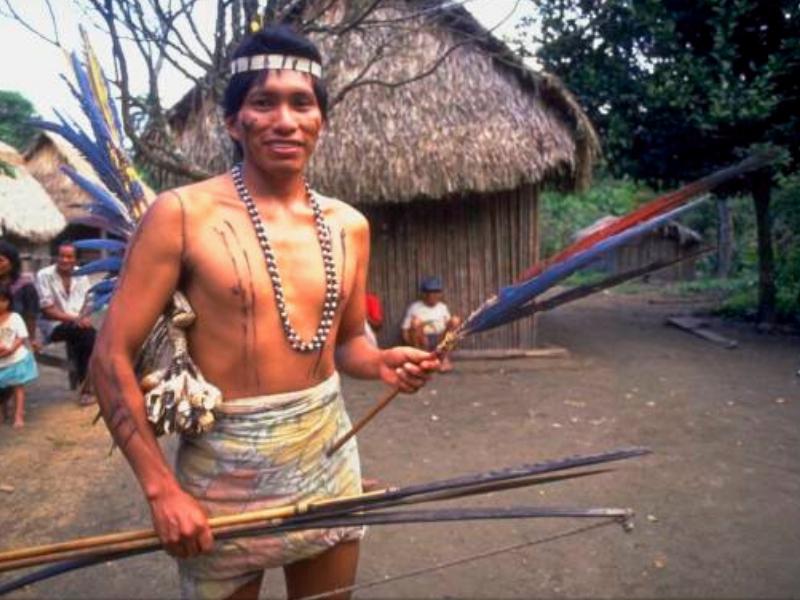
The inhabitants of the native community of Queros belong to the Huachipaeri ethnic group, of the Harakmbut linguistic family. Currently its members are few in number, being in a stage where the risks of loss of ancestral knowledge and traditional cultural values have been intensifying due to the increase in their intercultural relations with the population centers of the area.
The Huachipaeri have inhabited the region since ancient times, carrying out commercial exchanges with the Incas, and establishing peaceful alliances with the Matsiguenga and Amarakaeri of the area. At the end of the 1940s, a religious mission brought together the Huachipaeri, and a short time later a smallpox epidemic occurred that resulted in the death of approximately 65% of its population, which in part explains its small population. Queros was legally recognized as a Native Community in 1990.
Currently, the population of the native community of Queros is made up of approximately 38 people, a fairly small number mainly due to the fact that in recent years many of its members have been progressively leaving the place to join the populated centers and other communities of the area, mainly attracted by the search for better economic prospects, a better education for their children, among other motivations.
The community of Queros is located on the left bank of the Queros River, approximately 11 km southeast of the town of Pillcopata, a two and a half hour walk, in an area of high jungle considered sub-tropical humid forest.
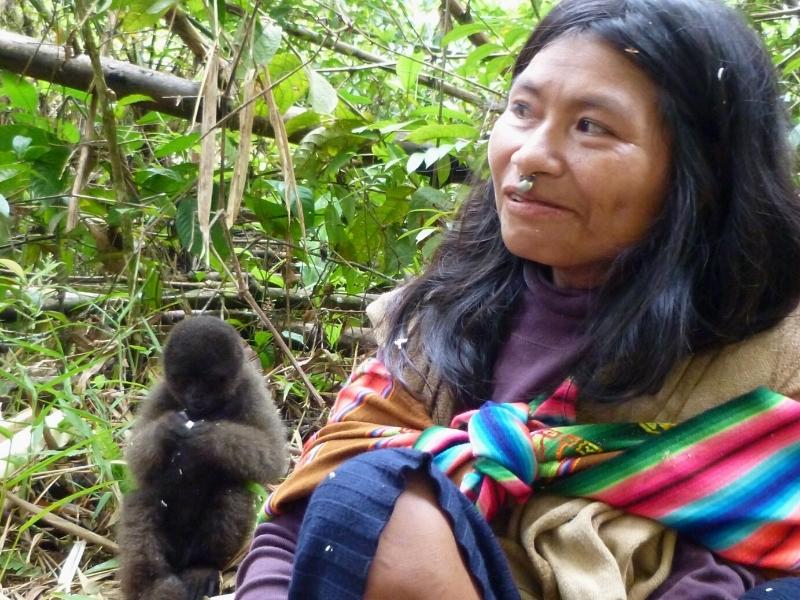
Among the inhabitants of the native community of Santa Rosa de Huacaria we find members of the Huachipaeri ethnic group, who initially, seeing their population seriously diminished by the action of the rubber tappers and inter-ethnic conflicts, entered into a peaceful marriage alliance with the Matsiguenga and established a common residence pattern.
Also, during the last decades many people from the Andean area settled in the area and were assimilated as members of the community, which was founded in 1965. Currently there are approximately 130 inhabitants from three different cultural groups.
Occasionally the community receives the visit of tourists interested in appreciating the local ecosystem and obtaining greater knowledge about the native lifestyle, in addition to acquiring various handicrafts made by the members of the community, constituting itself as a source of economic income.
The Huacaria community is located on the right bank of the Piñi Piñi River, approximately 9 km northwest of the town of Pillcopata, a two-hour walk. There is a carriageway that allows the entry of vehicles at certain times of the year.
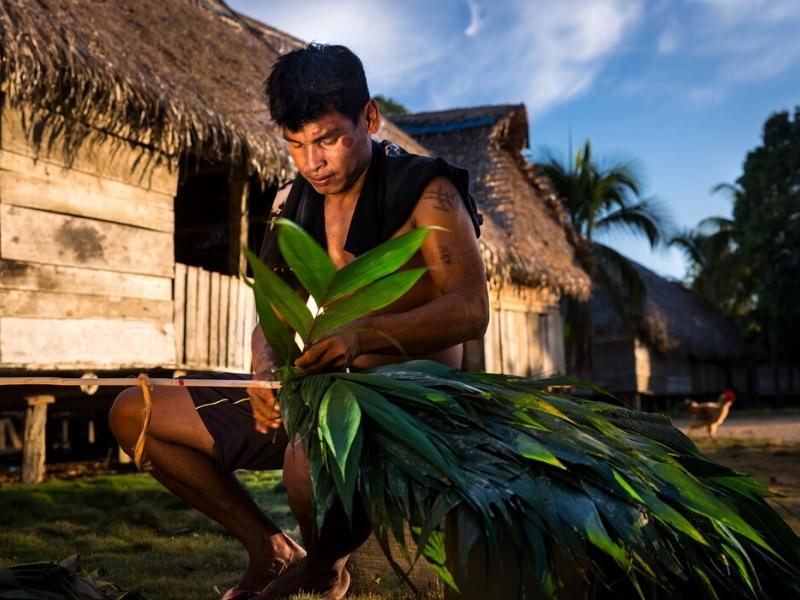
The inhabitants of the native community of Palotoa-Teparo belong to the Matsiguenga ethnic group, of the Arawak linguistic family, who were initially gathered in the area by the Shintuya Dominican Mission, in a stage characterized by the extraction of natural resources for commercial purposes.
The community of Palotoa-Teparo is currently located on the left bank of the Palotoa River, approximately 12 km northwest of the town center of Santa Cruz, an hour’s journey by boat. However, this location was recently established in 1999, after multiple territorial disputes mainly with the native community of Shintuya.
The community is made up of approximately 94 people. It has a school and a health post run by a health technician who treats the most frequent illnesses, mainly bronchial and stomach illnesses. The main activities they carry out are based on agriculture, hunting, fishing and collecting forest products, and are mainly oriented towards self-consumption.
They are currently participating in a project for the implementation of a tourist circuit, where the main attraction is made up of the Pusharo petroglyphs, which are pre-Columbian engravings at the base of a cliff, denoting a set of symbols and figures whose meaning to the time has not been clarified, in addition to wild animals and birds.
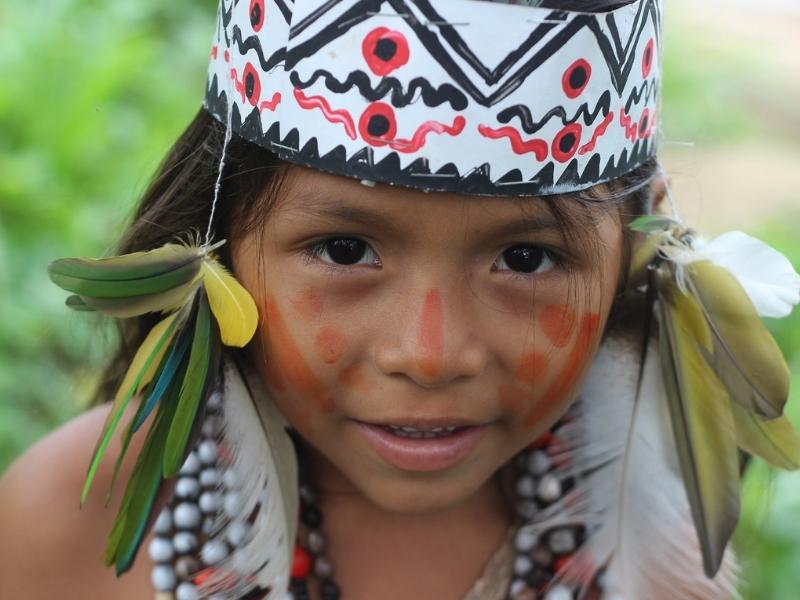
The native community of Shintuya is mainly made up of members of the Amarakaeri ethnic group, of the Harakmbut linguistic family, in addition to natives belonging to the Huachipaeri and Matsiguenga ethnic groups, some migrants from the Andean area settled in the community, and representatives of external institutions.
The community was established in the late 1950s, from the congregation of various groups of Amarakaeri affiliation that previously lived in isolation, within a program promoted by the Dominican Mission, using the Huachipaeri natives as guides and translators.
In recent years, their economic activities have been oriented mainly towards timber extraction, until the prohibition of this activity was made public after the most valuable timber resources in the area were almost exhausted, subsequently dedicating themselves to carrying out subsistence activities based on agriculture and trade, as well as hunting and fishing.
Currently the community is made up of 250 people, and has a health center, a primary and secondary school, electricity and road access. It is located on the right bank of the Alto Madre de Dios River, half an hour by boat or 10 minutes by car east of the town of Santa Cruz, approximately 7 km.
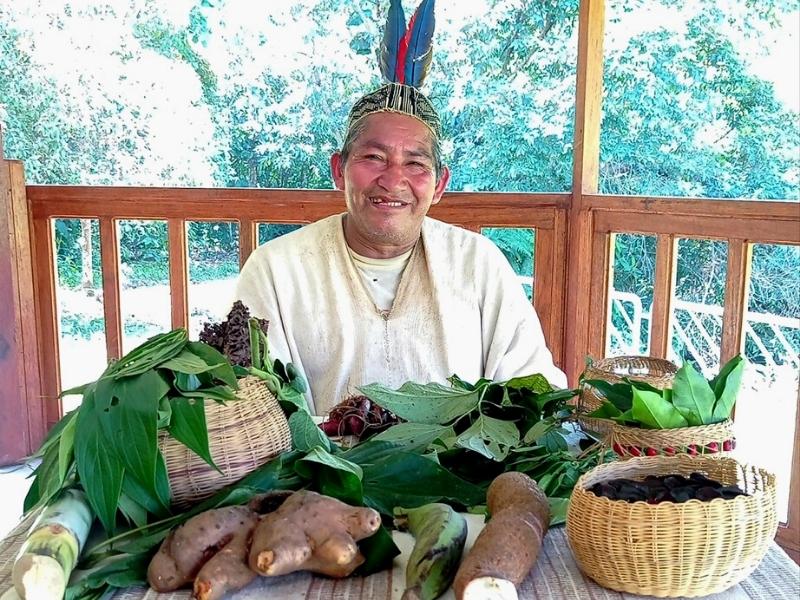
The inhabitants of the native community of Shipetiari belong to the Matsiguenga ethnic group, of the Arawak linguistic family, who come from different distant geographical places such as the Sotileja, Manu, Bajo Urubamba, Camisea, Palotoa, Shinkivenia, Pinquén rivers, among others, congregating as community since the 1980s.
This area was traditionally inhabited by Matsiguenga groups. Before the creation of the Manu National Park, the main socio-economic activity was agriculture, and lately the extraction of valuable wood such as cedar and mahogany, oriented towards the generation of economic income.
The current population of Shipetiari is 120 inhabitants, who have a school, a community center and a shelter for visitors. They still maintain and practice their traditional medical knowledge based on medicinal plants, which is why some people from outside come to the community to benefit from this knowledge.
The Shipetiari community borders directly with the Manu National Park, and is located on the left bank of the Alto Madre de Dios River, approximately 46 km northeast of the town center of Santa Cruz, a three or four hour boat trip. The river is the only access road to reach this community.
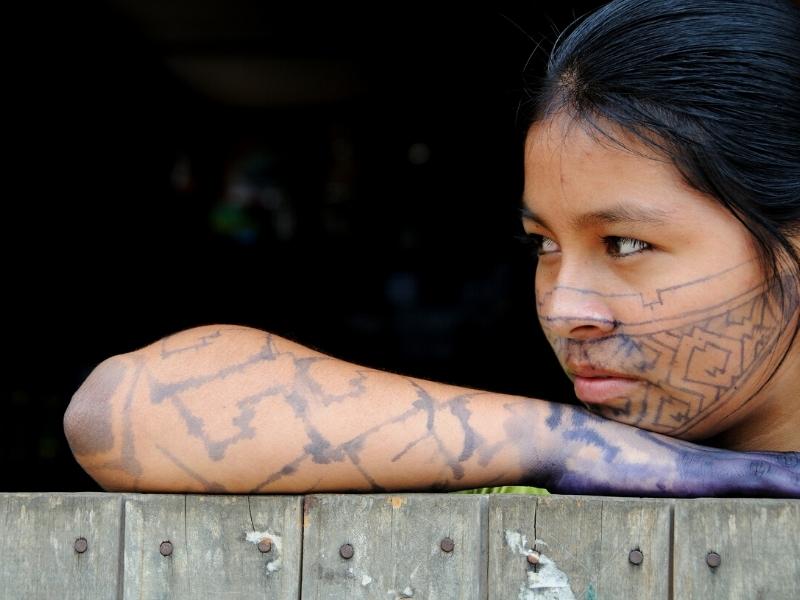
The inhabitants of the native community of Diamante, from the Lower Urubamba River, belong to the Yine ethnic group, generally known as Piro, of the Arawak linguistic family. The inhabitants of the Madre de Dios river basin call themselves “Yine Manu Gajene”, to differentiate themselves from other Yine groups located in different geographical sectors.
The Yine have traditionally practiced agriculture, hunting, fishing and gathering. Among them, women can also engage in hunting, unlike other ethnic groups where this activity is restricted to them. In Diamante, women have a great influence in the family sphere, and in this way also in public affairs.
In recent years the Yine de Diamante have been dedicating themselves to the extraction of wood, trade, raising small animals and lately to collect palm leaves to sell them in the town of Boca Manu, due to the great demand that they represent. for use in the roofing of homes and tourist shelters in the area.
The current population of Diamante is 350 people, although some of them are of Matsiguenga and Huachipaeri ethnic affiliation. They have a primary school and a technical agricultural school, an electric generator, a health post, although the implementation of medicines is very scarce. The population hopes to develop a project oriented to tourism.
The community is located at the last point where the road from Cusco arrives, on the right bank of the Alto Madre de Dios River, approximately 90 km northeast of the town of Santa Cruz, a four-hour boat ride, and 12 km southwest of the town of Boca Manu, half an hour by boat.

The inhabitants of the native community of Isla de los Valles belong to the Yine ethnic group, generally known as Piro, of the Arawak linguistic family, although there are currently some members of the Matsiguenga and Huachipaeri ethnic groups with whom the Yine married.
The Yine have inhabited the area of the Lower Urubamba River since time immemorial, crossing the Manu together with other ethnic groups. They have great skill in making ceramic handicrafts, cotton fabrics and natural bark, as well as beads, necklaces and various ornaments.
Previously they lived at the mouth of the Pinquén River, and then they moved to their current settlement located on the left bank of the Manu River, where it meets the Alto Madre de Dios River, 500 meters northwest of the town center of Boca Manu. Access to the community is only through the river, although this in turn represents a threat due to the constant erosion of the soil due to the change in the riverbed, especially in the rainy season.
Currently the community has approximately 89 people, who are united by kinship ties that to some extent encompass almost all of its members. They have a primary school and a health post, although the services provided do not meet the medical requirements, which is why they usually go to the town of Boca Manu.
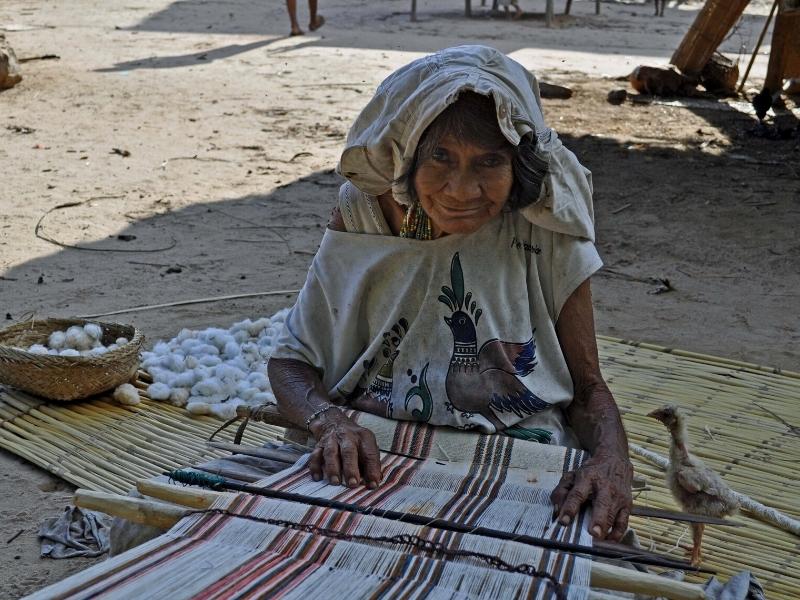
The inhabitants of the native community of Tayakome belong to the Matsiguenga ethnic group, of the Arawak linguistic family. The community is recognized, although it does not have a communal property title because it is inside the Manu National Park.
The community settled in its current location mainly due to the actions of the Summer Linguistic Institute (ILV) in the 1950s, promoting the concentration of scattered groups from the Sotileja, Alto Manu, Cumerjali, Yomybato rivers, among others, using this as guides and interpreters to other Matsiguengas from the Lower Urubamba river basin.
Currently, this community is participating jointly with the Yomybato community in an ecotourism project called Casa Matsiguenga, consisting of an operational shelter located in the Manu National Park tourist area.
The current population of the community is approximately 203 inhabitants, and it has a primary school, health post and satellite telephone. One of their greatest topics of interest is the possibility of obtaining economic income from various activities and not only from ecotourism and research, which are the main commercial options allowed within the protected natural area where they live.
The community is located on the right bank of the Manu River, approximately 320 km northwest of the town of Boca Manu, a ten-hour trip by boat with an outboard motor. Due to the flow of the river it is possible to reach the community at any time of the year.

The inhabitants of the native community of Yomybato belong to the Matsiguenga ethnic group, of the Arawak linguistic family. This community has a recognition, although it does not have a communal property title because it is inside the Manu National Park.
In the 1970s, many families gathered in the Tayakome community decided to retire to a less accessible area, mainly for fear of attacks by the Yora and to distance themselves from diseases that came from outside, in addition to discontent with their leaders and various conflicts. internal social, settling in the Yomybato stream, also known as Quebrada Fierro.
In the 1980s, the activities of the oil companies in the area caused the isolated Yora indigenous people to move to the territory of the Matsiguenga within the Manu National Park, generating a displacement of the latter towards the Yomybato community, mainly from the upper parts of the Cumerjali, Sotileja and Yomybato or Fierro rivers.
The current population of the community is approximately 212 inhabitants, who have a primary school, a health post and satellite telephone. During the first years of intervention, many complaints were filed against health personnel, mainly referring to the lack of respect for traditional indigenous customs.

These indigenous people belong to the Arawak linguistic family, whose language is similar to Yine. They maintain a nomadic life pattern based on seasonal cycles that determine the availability of forest resources, since in the rainy season they are found in the headwaters and in the dry season they go to the river beaches.
The natives move in groups over an extensive territory, mainly between the rivers Las Piedras, Lidia, Los Amigos, Pinquén, Panagua, Manu, and other smaller streams. It is estimated that the number of indigenous belonging to this group in the area would be at least 250 individuals.
Likewise, it is presumed that these groups previously maintained relations with other natives, especially with the Yine, but due to the experiences of abuses exerted by the rubber tappers and transmitted diseases, they chose to withdraw to the most remote and difficult to access areas, avoiding from there establish any contact with strangers.
The greatest contact that has been established with members of this group in recent decades occurred when three Masco-Piro women established relations with the park rangers of the Pakitza surveillance post, inside the Manu National Park, who subsequently married indigenous people from the native communities of Diamante and Shipetiari, but living somewhat apart.
Currently, the main threat to this group is represented by the presence of illegal loggers who carry out forest extraction activities in their territory, with the possibility of generating violent conflicts that have already been taking place and territorial displacement, thereby affecting their patterns of subsistence.
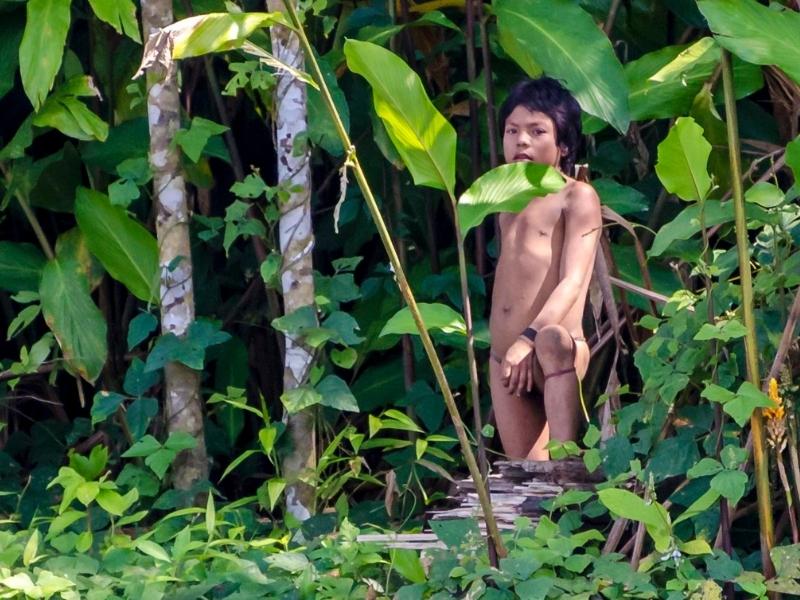
The Yora indigenous people belong to the Pano linguistic family. The groups that live in isolation are known by various local denominations, but their way of life is similar to that used by the Yora of Santa Rosa de Serjali before their cultural contact with outside society.
Its current location mainly includes the headwaters of the Mishahua, Cújar, and Purús rivers, as well as the headwaters of the Tahuamanu and Yaco rivers, among others. Their way of life is based on an itinerant pattern, moving seasonally depending on the availability of forest resources. Its current population is estimated to be made up of at least 200 people.
Currently, the territory inhabited by these indigenous groups is within areas protected by legal provisions, due to its location in the State Reserve in favor of the Nahua-Kugapakori populations, the Alto Purús Reserved Zone, the State Reserve in favor of the isolated indigenous populations of Madre de Dios, among others.
However, the lack of effective control by the authorities in charge has been generating serious threats for these indigenous people, especially in terms of their health and subsistence resources, having produced multiple violent conflicts in recent years, due to the presence of strangers in their territory, mainly loggers and other people who carry out furtive hunting and fishing activities in the area.
In this regard, another of its important problems has been generated from the forest concessions granted in the area where isolated indigenous people transit or where they carry out their subsistence activities, declaring the indigenous territory as a freely available forest, and thus evidencing a great lack of knowledge of the local reality and of the risks that the activities of the loggers imply for the indigenous people.
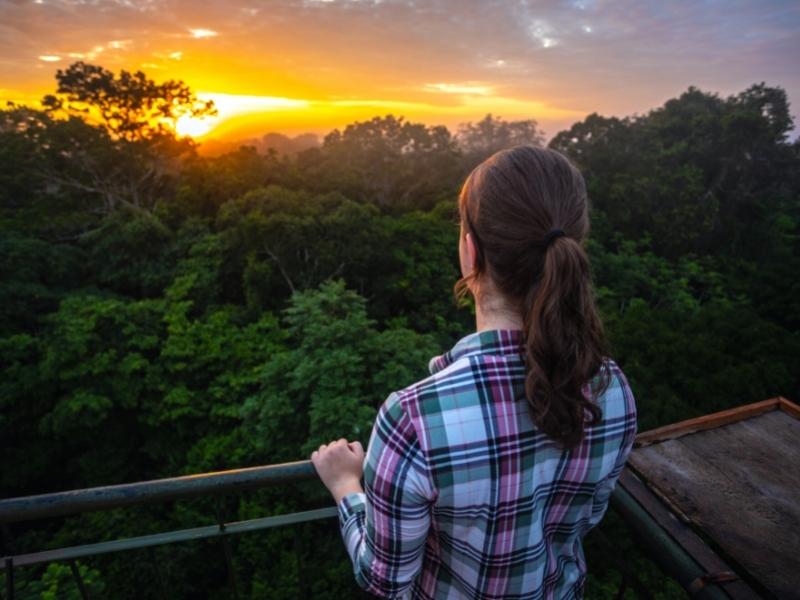
Dive deep into the culture and landscapes of Peru with this adventure to Machu Picchu, the Amazon and more. Search for wildlife along jungle trails and rivers in the rainforest from a comfortable lodge then head up into the Andes to Cusco, the capital of the Inca empire.


Your luxury trip to Peru includes a selection of Andean and Amazonian landscapes. We will help you to explore this welcoming and varied country, planning each step of your trip, with the best services. With the help of amazing expert guides, you can enjoy all that Peru has to offer, every detail is well taken care of.

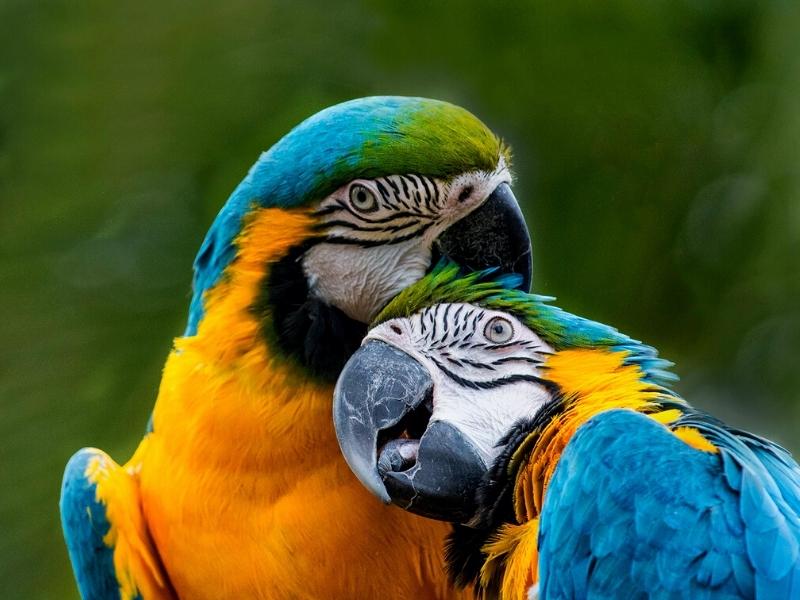
Peru is a country with different cultures and beautiful landscapes. It has one of the best gastronomy in the world. This tour is designed for travelers looking for unique and special moments in their vacations, and families who want to avoid crowds. You will visit the ancient city of Lima, the Amazon forest, the beautiful sacred valley of the Incas, the wonder of Machu Picchu.


Manu National Park is an excellent way to experience an intense amazon wildlife.Is the biggest Amazon rainforest in the Americas, its incomparable natural wealth, host the greatest amount of flora and fauna of the world.

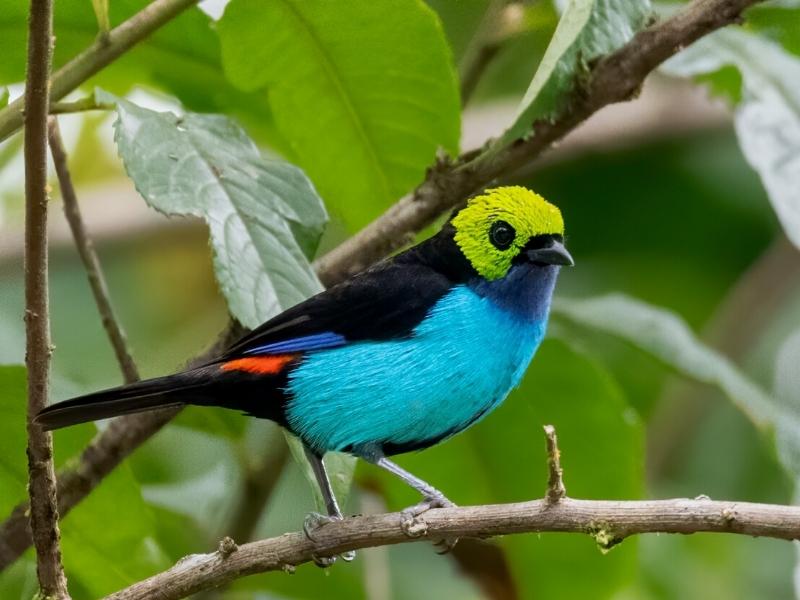
Manu National Park is located in the Amazon rainforest of Peru. This attraction is one of the few places on the planet that still maintains its great biodiversity of birds, mammals, reptiles and many medicinal plants.


Explore Manu National Park 5 days, the amazon’s mystery and Live a fascinating adventure to the vast amazon Manu national park , is one of the best places in South America to see a stunning variety of tropical wildlife.

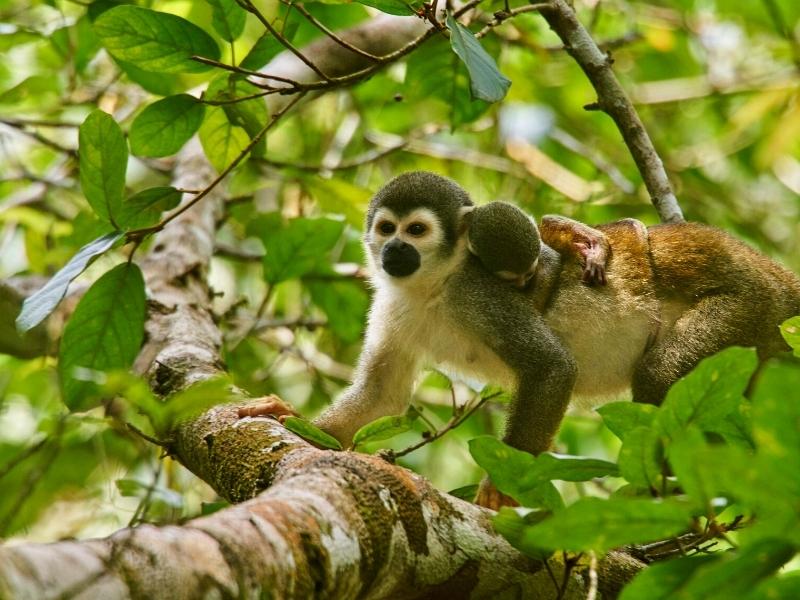
This trip allows you to have one of the best experiences in the Manu National Park which includes the Reserved Zone in only 7 days. It is an ideal way to experience the culture and traditions of local communities and see the distinct species of animals and birds that inhabit here.

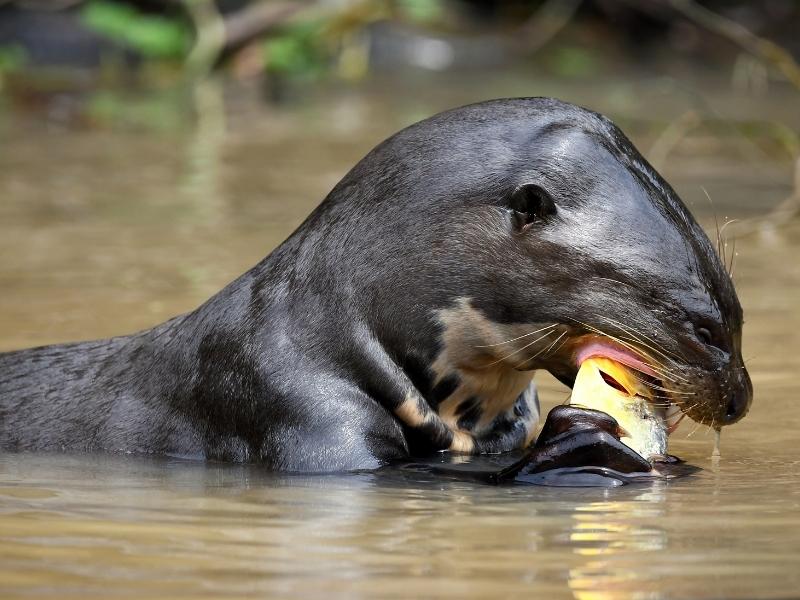
Discover the majestic Amazon rainforest of the Manu National Park. This protected area is in Peru, it is one of the largest ecosystems on the planet, due to its great diversity of birds, insects, plants and mammals.

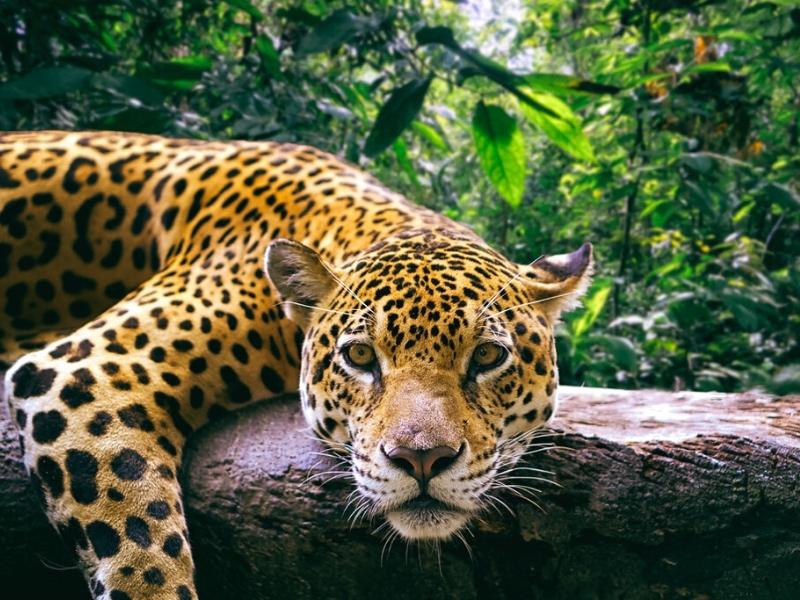
The Manu Jungle tour goes to one of the largest life biosphere reserves in the World. You will enjoy wildlife, traditional villages, with the best specialized guides.
